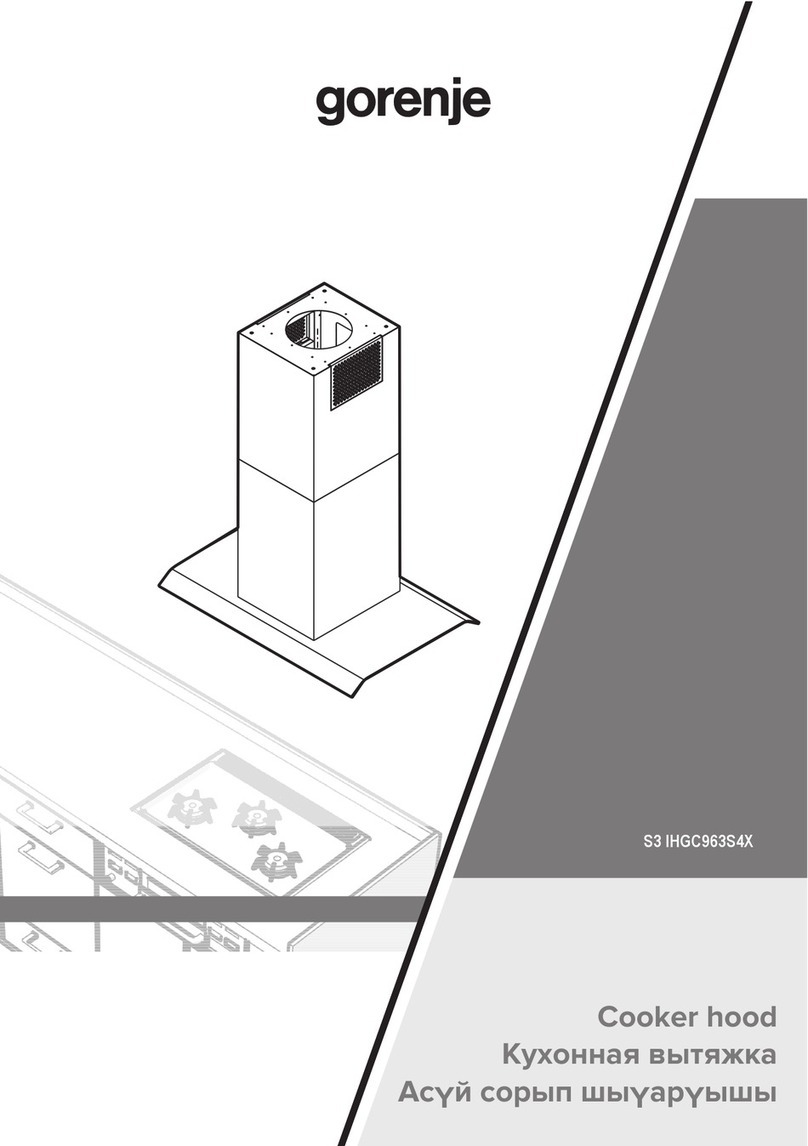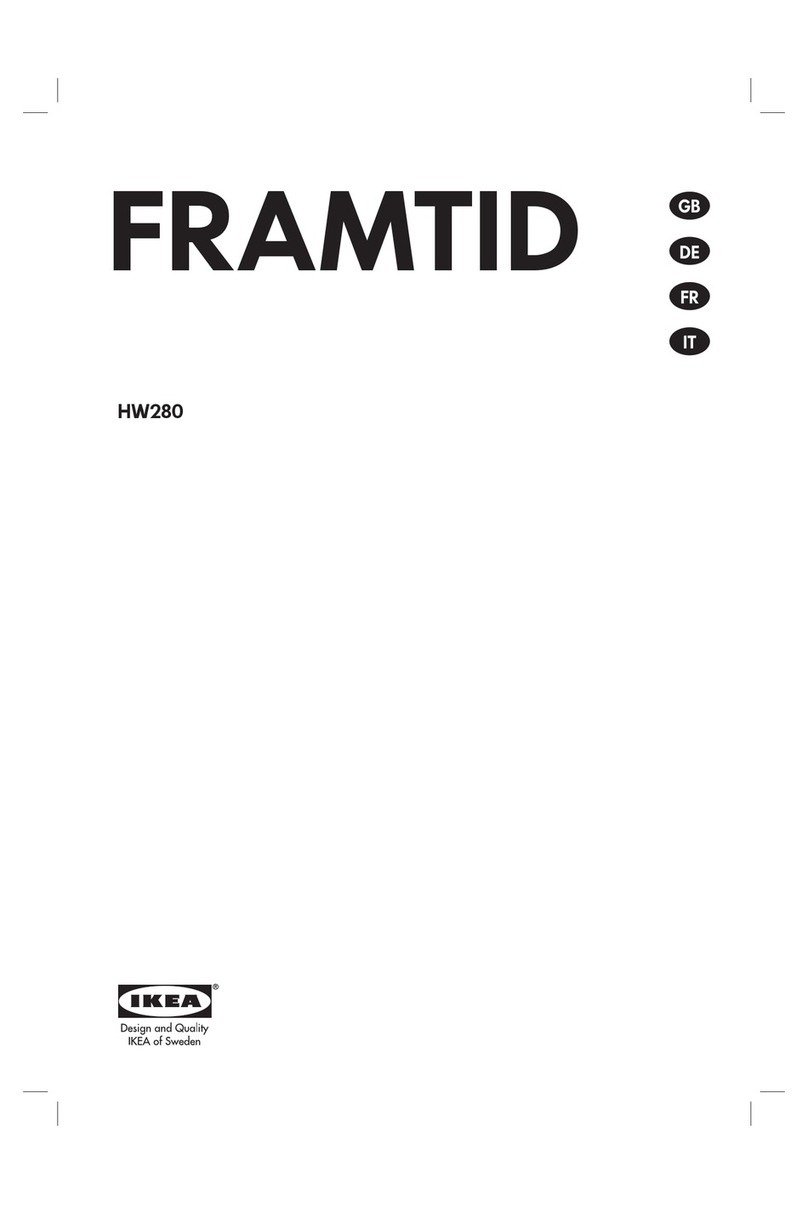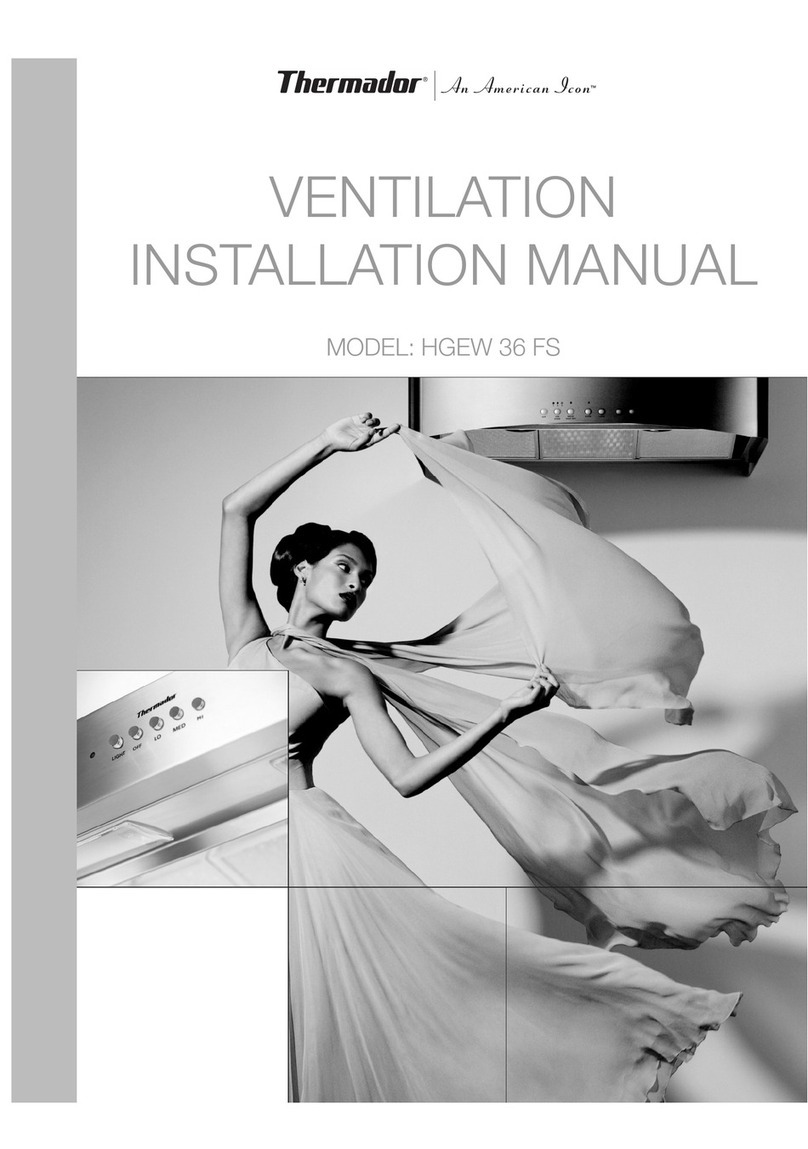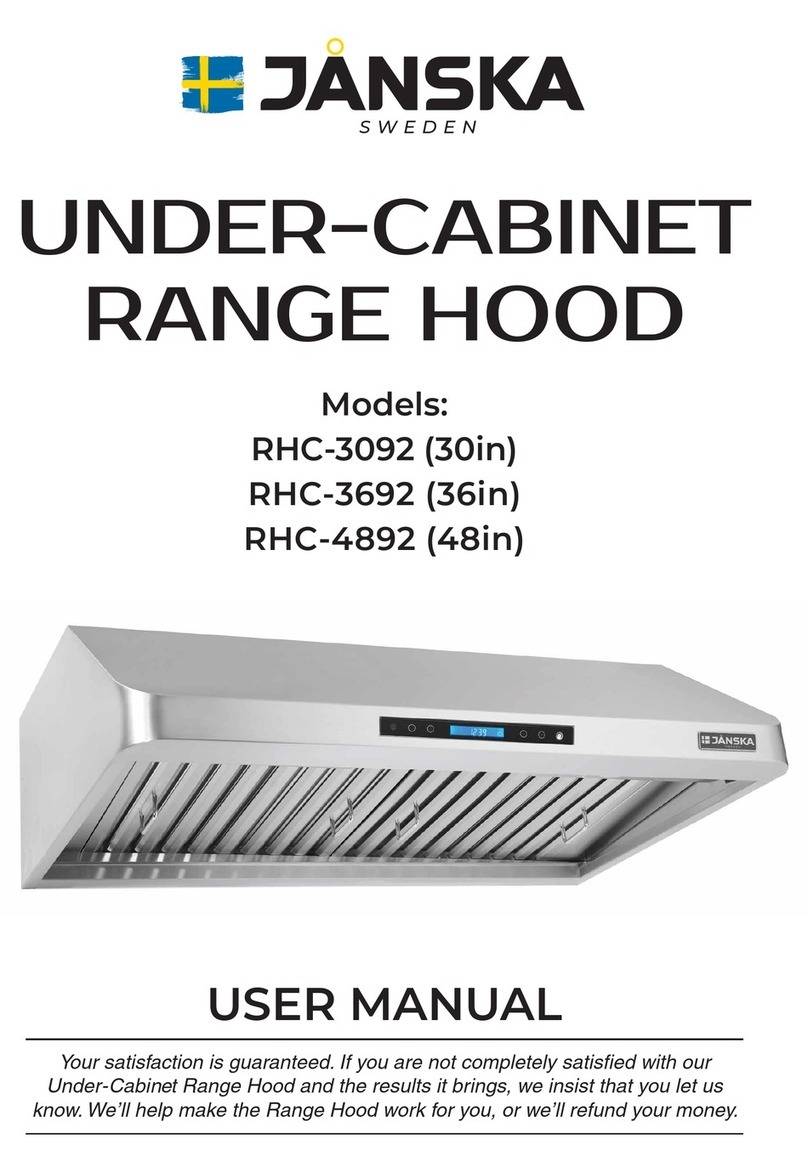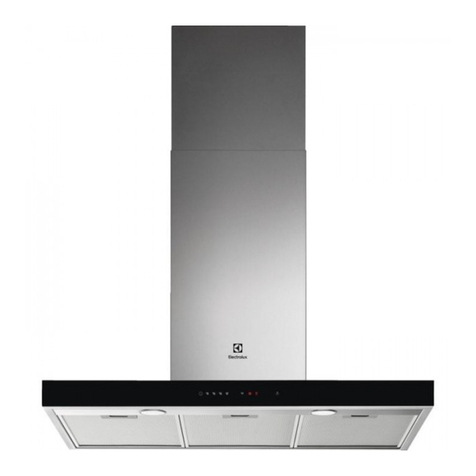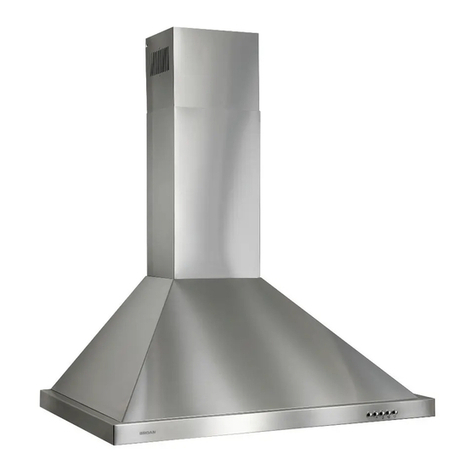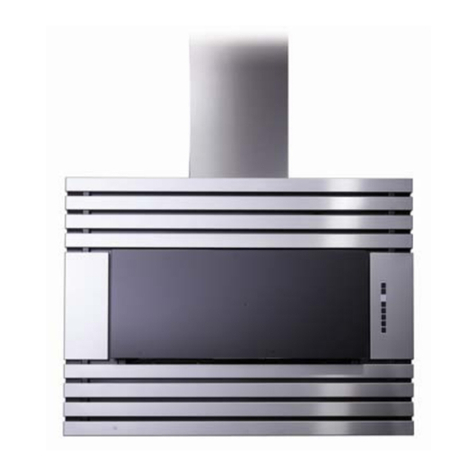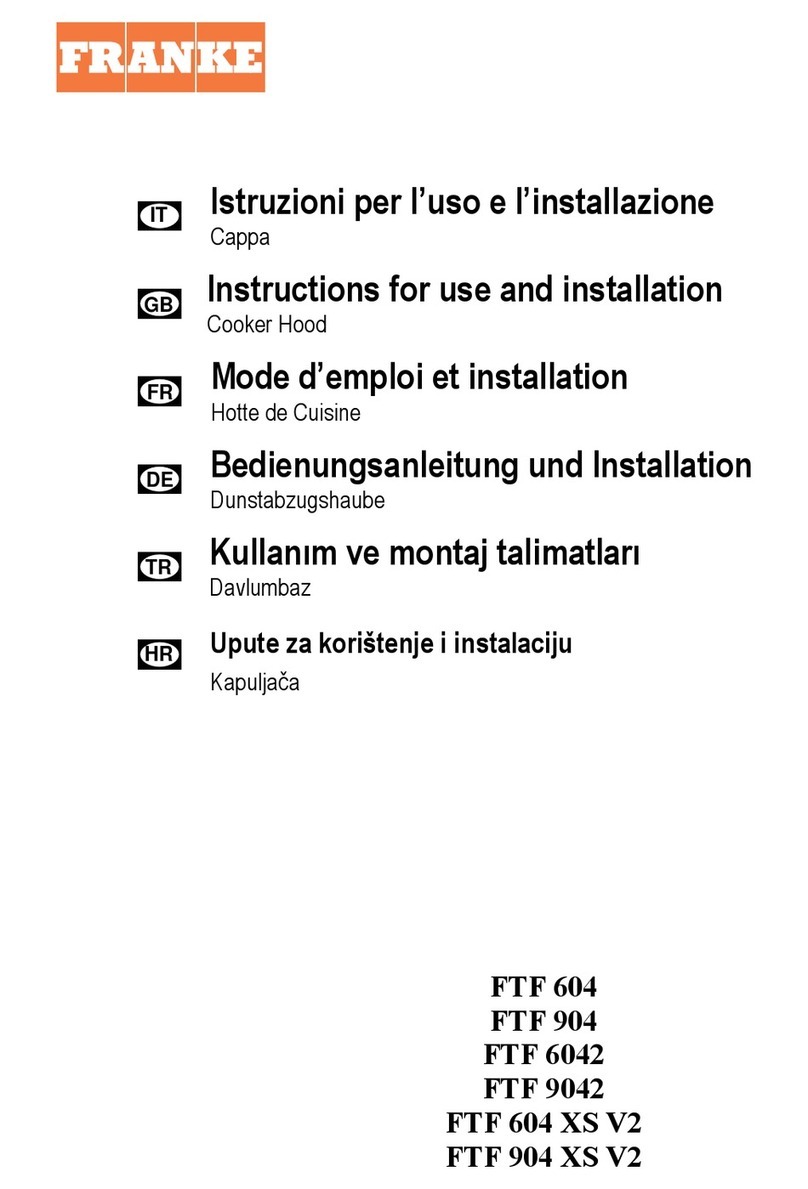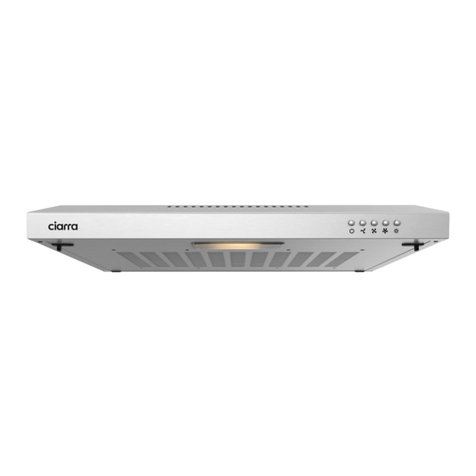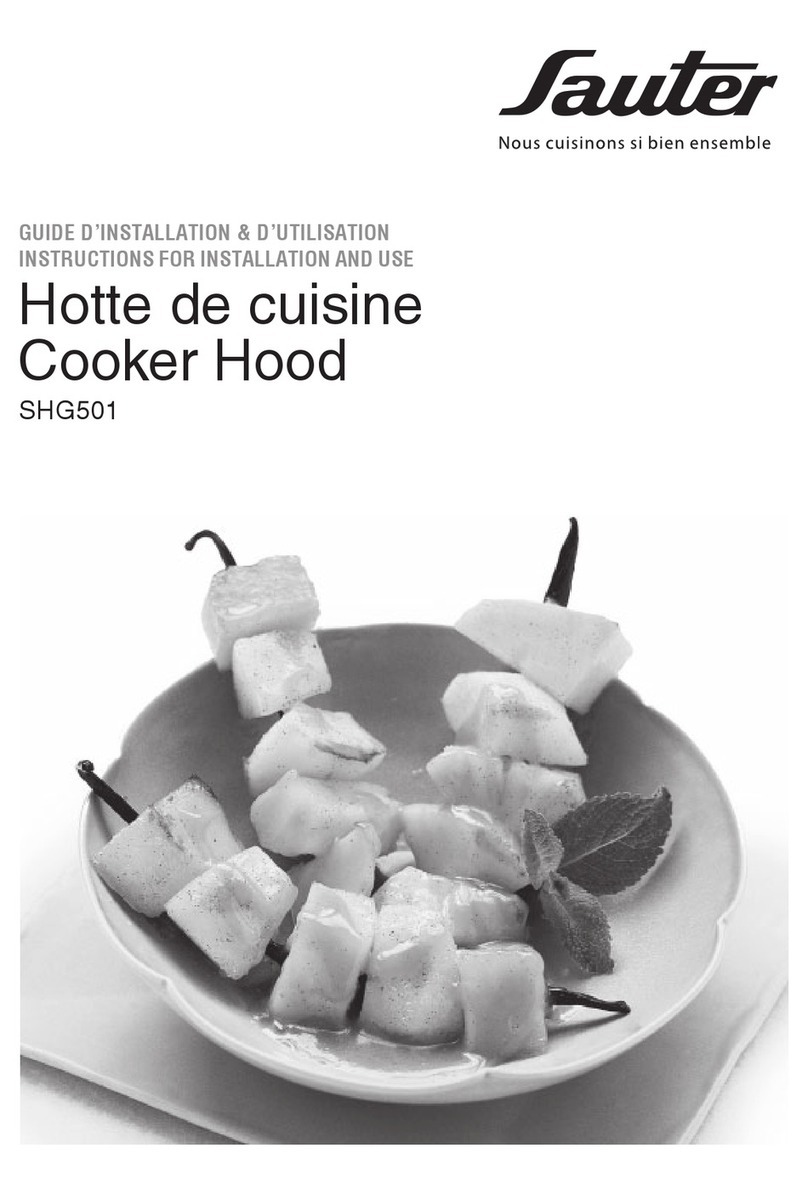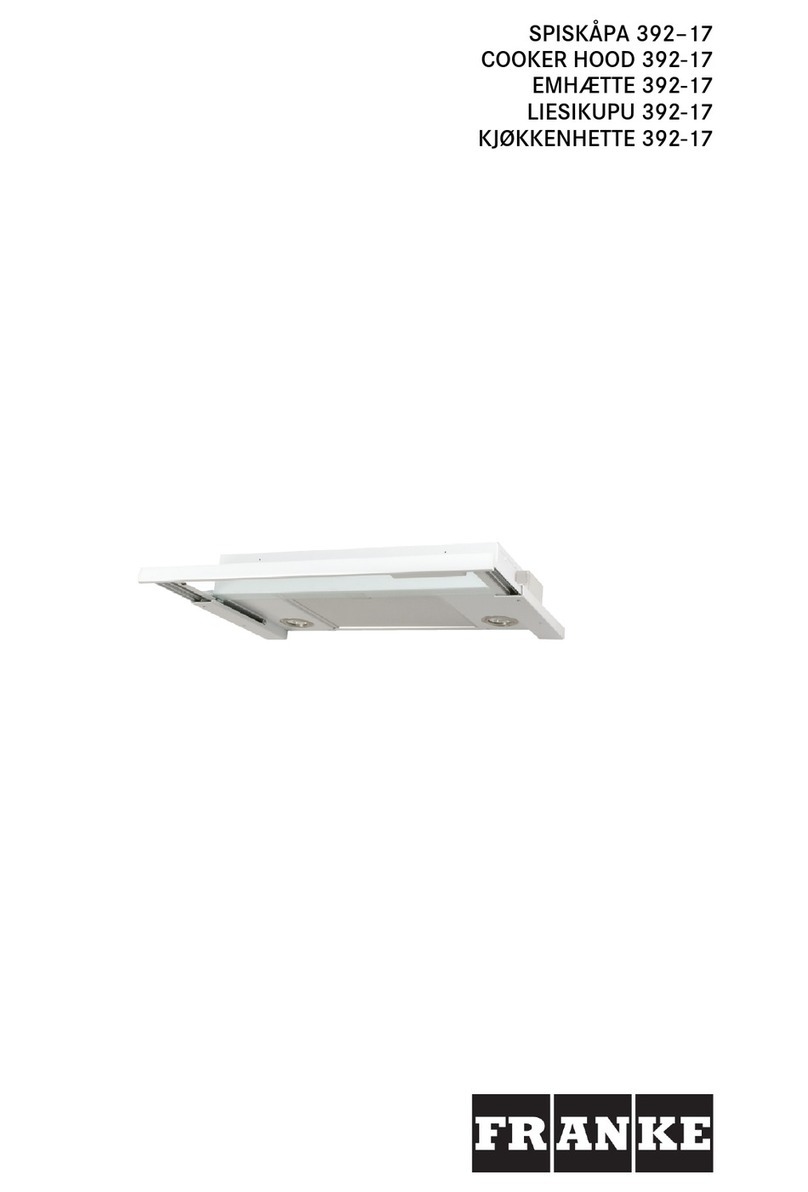
WARNING: TO REDUCE THE RISK OF FIRE, ELECTRIC SHOCK, OR INJURY TO
PERSONS, READ THE FOLLOWING:
• Use this unit only in the manner intended by the manufacturer.
• Make sure that the voltage indicated on the rating plate of the appliance corresponds to
your outlet voltage.
• Do not attempt to alter the technical features of the range hood as this poses a safety risk.
• Installation work and electrical wiring must be done by a qualified professional(s) in accor-
dance with all applicable codes, standards, and fire-rated constructions.
• DO NOT attempt to install this appliance yourself. Injury could result from installing the
unit due to lack of appropriate electrical and technical background.
• The range hood may have very sharp edges; please wear protective gloves if it is neces-
sary to remove any parts for installing, cleaning or servicing.
• The manufacturer does not accept any liability for any damage or injury caused by
improper installation.
• Due to the size of this range hood, a two person installation is recommended.
WARNING: This range hood is for wall-mounting ONLY.
• When cutting or drilling into walls or ceilings, be aware of electrical wires, piping, and
other utilities.
• To prevent back draft, sufficient air is needed for proper combustion.
CAUTION: To reduce the risk of fire and to properly exhaust air, be sure to duct air out-
side.
• DO NOT vent exhaust air into attics, crawl spaces, garages, or within walls and ceilings.
CAUTION: For general ventilation use only. Do not use to exhaust hazardous or explo-
sive materials and vapors.
• This appliance is intended for normal family household use only. It is not approved for out-
door use. Use of this product in a commercial setting or if installed outdoors will void the
warranty.
• Do not operate the range hood with a damaged cord or plug.
• Always have a working smoke detector near the kitchen.
• Have an appropriate fire extinguisher available, that is nearby, highly visible, and easily
accessible to the cooking appliance.
• Apart from hazardous grease fires, small food fires should be extinguished by smothering
with baking soda. Never use water on cooking fires.
• Whenever possible, do not operate the ventilation system during a cooktop fire. However,
do not reach through fire to turn it off.
WARNING: TO REDUCE THE RISK OF A COOKTOP GREASE FIRE, READ THE FOL-
LOWING:
• Use proper pan size. Always use cookware appropriate for the size of the surface ele-
ment.
IMPORTANT SAFETY INSTRUCTIONS
2
